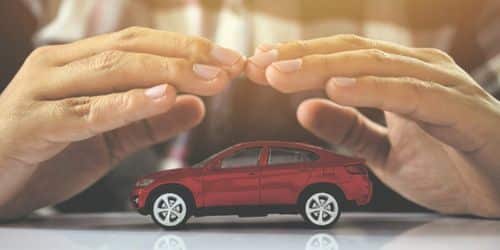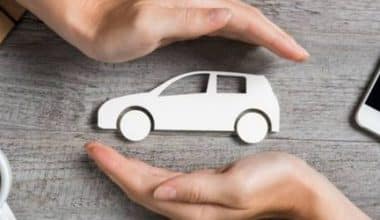Imagine someone slammed into your car without insurance, or worse, hit a visitor and drove off. In the event of an accident with an uninsured driver, you will be responsible for your medical bills and automobile damages. You want to know more, right? Then stick with me as I explain the truth about uninsured motorist coverage.
What Does Uninsurance Mean?
Uninsurance means that you are responsible for all services and have no coverage for any of them.
What is Uninsured Motorist Coverage?
The uninsured motorist coverage part of a car insurance policy protects the insured if they get in an accident with a driver who doesn’t have insurance. In addition, an uninsured motorist is an add-on to a conventional car insurance policy. This coverage pays for damages to the insured and their passengers. Also, this coverage pays for property damage, if the other driver is legally responsible for the accident but doesn’t have enough insurance to cover the damages. Uninsured motorist coverage is a type of car insurance that is sometimes required by law and sometimes not.
Types of Uninsured Motorist Coverage
The various types of uninsured motorist coverage include:
#1. Uninsured Motorist Bodily Injury Coverage
In the event of an accident, this policy will compensate you for medical expenses, missed wages, and emotional distress. The same is true for any passengers in the vehicle just at the time of the accident. Limits for this type of insurance are typically established on an individual basis.
#2. Uninsured Motorist Property Damage Coverage
When an uninsured driver causes damage to your vehicle or other property, this protection will pay for the repairs. This protection extends to strike accidents in some jurisdictions. A penalty of approximately $300 may apply to this protection.
#3. Underinsured Motorist Coverage
This is a type of auto insurance that is often mandated by states in addition to uninsured motorist coverage. In most cases, the operation of this form of policy is analogous to that of auto insurance personal accident coverage. However, it’s meant to cover situations in which the driver at fault for the accident does not have enough insurance. The term “underinsured” can be understood in a variety of ways according to the state in which one resides. A motorist is considered underinsured if they have automobile insurance coverage, but their insurance is lacking in at least one of the two categories described below.
- Their insurance doesn’t cover enough to pay for your medical bills and other costs from the accident.
- Their limitations are lower than or equivalent to the threshold of coverage provided by your uninsured motorist coverage.
In general, your auto liability coverage will cover the difference, up to the amount of your uninsured motorist insurance. This is the difference between the limits of the underinsured driver’s liability and the cost of your injuries or losses, if they were caused by the underinsured driver. In some places, the uninsured motorist coverage and the underinsured motorist policy are combined into a single type of coverage that you can buy as part of your car insurance plan.
How Much Uninsured Motorist Should I Need?
Uninsured motorist coverage protects the policyholder and his or her family if an accident is caused by a driver who does not have insurance.
Most people purchase uninsured motorist coverage for the same amount as their accidental damage liability policy. That is to say, you have the option of purchasing less or no uninsured motorist coverage. Nevertheless, uninsured motorist insurance is not available unless you also have bodily injury insurance.
When deciding how much-uninsured motorist coverage to buy, I believe numerous considerations come into play. What is my price range? Which is better, stacks or no stacks? Is the insurance I have in place adequate to safeguard my loved ones and me? What kind of insurance protection does my agent suggest? Please specify the car’s model and year. When the insured’s concerns are addressed, they can make an informed decision about the amount to purchase.
Also, know that you can’t get more uninsured motorist coverage in addition to your accidental damage insurance. This means that if you choose a policy with limits on bodily injury of $30,000, you can’t buy more than $20,000 in protection against drivers who don’t have insurance. In other words, you would need uninsured motorist coverage equal to your accidental damage coverage to be safe. Even though you hope you’ll never have to use it, auto insurance can give you some peace of mind if you are not at fault in an accident. This insurance can help pay for things like medical bills, lost earnings, and discomfort.
Lastly, location is an important consideration when deciding how much uninsured motorist coverage to buy.
Do I Need Uninsured Motorist Coverage?
Several states do not require motorists to carry uninsured motorist coverage, generally known as UM coverage. However, driving without uninsured motorist coverage puts you in a delicate situation, even if it’s not mandated in your state. The Insurance Information Institute estimates that approximately 13% of all drivers in the United States do not have automobile insurance. The percentage of drivers who do not have insurance is estimated to be over twenty percent in various states.
If you are hurt or your car is wrecked in an accident with a driver who is not uninsured, you can run the risk of having to pay the cost of your medical expenses. Even though you file an action against your policy, you might have high accident deductibles, insufficient insurance bills, or medical negligence coverage to cover injuries sustained by you or your passengers.
Do I Need Uninsured Motorist Coverage if I Have Collision Coverage?
Even if you already have collision insurance, if it is a legal requirement in the state where you live, you will still have to buy auto insurance. If, on the other hand, buying uninsured driver injury and property coverage is up to you and you already have collision insurance in the state where you live. Then, it is possible that you do not want this additional coverage. This is because collision insurance helps pay for the cost of fixing or replacing your car, no matter who caused the accident. It’s also possible that it will help cover accidents that only involve one car, as well as those that involve other objects, like when you hit a wall.
In addition, collision insurance does not cover injuries to a person. Therefore, you should consider purchasing uninsured motorist liability coverage in addition to collision insurance. If you get hurt in an accident that was caused by a driver who didn’t have enough insurance or didn’t have any insurance at all, and you don’t have coverage for uninsured drivers, you may have to pay for your own medical bills.
The Truth About Uninsured Motorist Coverage
An uninsured motorist (UM) is a driver who is at fault in an accident but does not have auto insurance. A motorist who causes an accident and then flees the scene is also regarded as operating a vehicle without insurance. If you are involved in a crash with an uninsured driver and do not have coverage for uninsured motorists, it is possible that you will not be compensated for your injuries, even though the other driver was at fault for the collision.
How it works:
If an uninsured driver hits you, your insurance will cover medical bills and lost wages. Instead of suing the at-fault driver for not having insurance, your auto insurance will cover the damages. Also, if you don’t have this coverage, you can try to utilize your healthcare coverage. However, they usually won’t pay for your hospital bills after a car accident until you’ve used up all your car insurance coverage. But you will still be accountable for the astronomical deductibles and copayments.
The alternative is to file a lawsuit against the uninsured motorist, which may be a time-consuming and expensive process. When you have uninsured motorist protection, your regular auto insurer will manage the complaint and pay the bills on your account.
Prerequisites for Filing an Uninsured Motorist Coverage
As part of their accident report, the cops will notify all drivers involved if the at-fault motorist does not have insurance. Gather as much evidence as you can if the police do not arrive or in the event of a hit-and-run accident. Get the contact information (including the addresses and contact details) of any possible witnesses. Make sure you document the scene with images and acquire the other driver’s license plate information if you can.
Immediately report the incident to your insurance provider and provide them with as many details as you can. You may have to file your uninsured complaint within a certain time frame with some insurance companies. Some businesses have different maximums.
As part of a claim settlement, insurance companies often need receipts and records of treatment for any injuries or damage to a vehicle. Insurance companies can refuse to pay for some expenses that were claimed after an accident if they determine that they were unnecessary or unrelated to the incident. If the insured disputes the insurer’s judgment, the dispute is often resolved through arbitration clauses.
What Happens if Hit by Uninsured Driver?
In the event that you are involved in a collision with a motorist who does not possess any form of automobile insurance, you will most likely be required to contact your insurance company in order to receive compensation for your losses. Uninsured motorist (UIM) coverage, which is typically purchased as an extra safety net, is your best option.
What if the Person Who Hits Me Does Not Have Insurance?
If the party who caused the accident does not have auto insurance, you have the option of filing a claim for reimbursement with your insurance provider or initiating legal action against the guilty individual. You might think that if you get into an accident with another driver, that driver will have insurance. Unfortunately, that’s not always the case.
Can I Drive an Uninsured Car on My Insurance?
It is against the law to drive a car that is not insured, even if the owner gives you permission. Also, you could be breaking the law if you have auto insurance or if you have to drive a car without insurance because you have no other choice.
What to Do After a Car Accident Not Your Fault?
Following a car accident that was not your fault, you should:
- Assess injuries and secure the area.
- Quickly notify the authorities.
- While you wait for the police, you should collect evidence.
- Notify your insurer of the situation.
- Have a doctor examine you.
- Get the services of a lawyer specializing in automobile accidents.
- Don’t put your trust in the insurance agency.
What Happens if the Person at Fault in an Accident Has No Insurance in California?
If the driver who caused the accident does not have insurance, the victim of the accident has two options:
- They can either initiate an action against the underinsured motorist coverage of their doctrine, ie if they have that coverage.
- They can choose to begin with an assertion directly against the driver who caused the accident.
What Happens if I Get Caught Driving a Car Am Not Insured On?
If you are caught driving without insurance, especially if you are in an accident, a jury could decide to seize your car and take away your registration and driver’s license. This would be the case even if the accident was not your fault.
Do I Need Uninsured Motorist Coverage if I Have Collision and Comprehensive in Texas?
Having collision and comprehensive insurance is not enough; you also need uninsured motorist protection. In the event of an accident with an uninsured motorist, collision insurance will cover the cost of repairs to your car but not your medical bills or any other expenditures you may incur as a result of the accident.
References
- marketwatch.com
- investopedia.com
- trialpro.com






